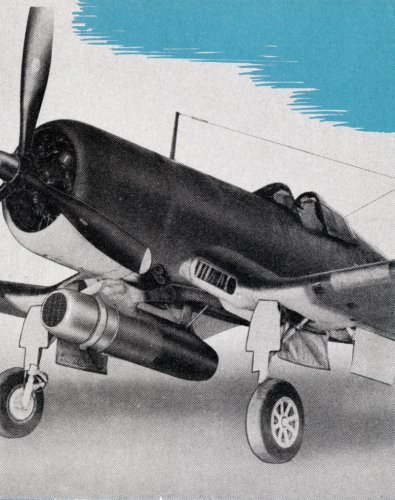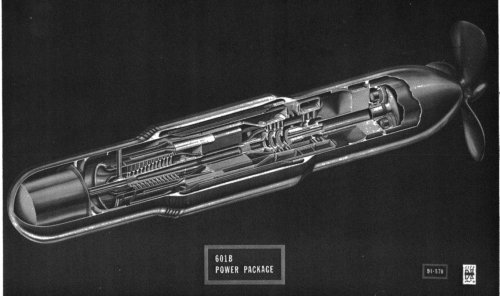You are using an out of date browser. It may not display this or other websites correctly.
You should upgrade or use an alternative browser.
You should upgrade or use an alternative browser.
Propulsion Hacks (Engines bolted on, etc)
- Thread starter RyanC
- Start date
- Joined
- 11 March 2012
- Messages
- 3,249
- Reaction score
- 3,179
I suspect that your photo shows a flying test-bed for a new jet engine.
These days it is more common to test a new engine by bolting an extra pylon on an existing multi-engine airplane.
As for production "hacks" … when production of large piston engines overlapped with early jet engines, a few airplanes were powered by both. The Ryan Fireball had a piston engine turning a propeller at the front and a jet engine pushing hot air out the tail.
The USAF retro-fitted a lot of radial-engine transports with booster jet engines for take-off: B-36 bomber, C-119 Flying Boxcar, C-123 Provider, P2 Neptune, etc.
Jet Assisted Take Off rockets can be easily fitted to dozens of other airplanes to improve take-off and climb performance: C-130 Hercules, Martin Marlin flying boat, etc.
These days it is more common to test a new engine by bolting an extra pylon on an existing multi-engine airplane.
As for production "hacks" … when production of large piston engines overlapped with early jet engines, a few airplanes were powered by both. The Ryan Fireball had a piston engine turning a propeller at the front and a jet engine pushing hot air out the tail.
The USAF retro-fitted a lot of radial-engine transports with booster jet engines for take-off: B-36 bomber, C-119 Flying Boxcar, C-123 Provider, P2 Neptune, etc.
Jet Assisted Take Off rockets can be easily fitted to dozens of other airplanes to improve take-off and climb performance: C-130 Hercules, Martin Marlin flying boat, etc.
Last edited:
- Joined
- 25 July 2007
- Messages
- 4,299
- Reaction score
- 4,196
I suspect that your photo shows a flying test-bed for a new jet engine...
Ryan's image kind of shows both. The Westinghouse 19A Yankee (later J30) turbojet was originally intended as a booster engine for the Goodyear FG-1A. The second X19A was test flown under Corsair BuNo 13041 - as a booster - on 21 January 1944.
Similar threads
-
-
Mélot's "trunk-propeller": jet engines as seen in 1921
- Started by Stargazer
- Replies: 5
-
Design exercise: next generation carrier onboard delivery airplane for US Navy
- Started by riggerrob
- Replies: 92
-
-


